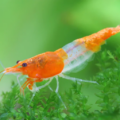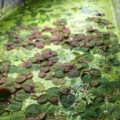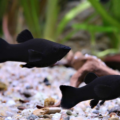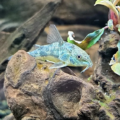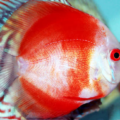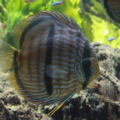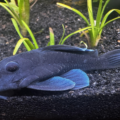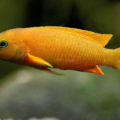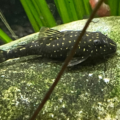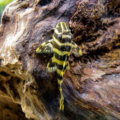Did you know bottom-dwellers, like the Peppered Corydoras, can be engaging pets to keep in your aquarium? In this guide you will learn the best healthcare, tank setup, breeding, and much more tips for maintaining Peppered Corydoras in your aquarium.

Introduction
Today, we’re looking at a popular freshwater bottom feeder with a peaceful and social personality you’ll love. Peppered Corydoras gets its name from its distinctive speckled body, which makes them a favorite of all aquarists.
If you’re a beginner, don’t get discouraged because this Corydoras paleatus overview will show you more reasons to fall in love with this scavenging species. You can even add them to your community tank since they are peaceful, more on compatibility later.
But first, I must warn you that Peppered Corydoras care needs dedication, time, and a couple of dollars. So, keep reading to see how you can best invest in these pets, creating a healthy and happy environment for these cories in your tank.
Author’s Note: Check out the 14 Types of Corydoras Catfish: A Guide to Hardy and Playful Freshwater Fish for our favorite Corydoras picks!
Recognizing the Peppered Corydoras: A Master of Camouflage
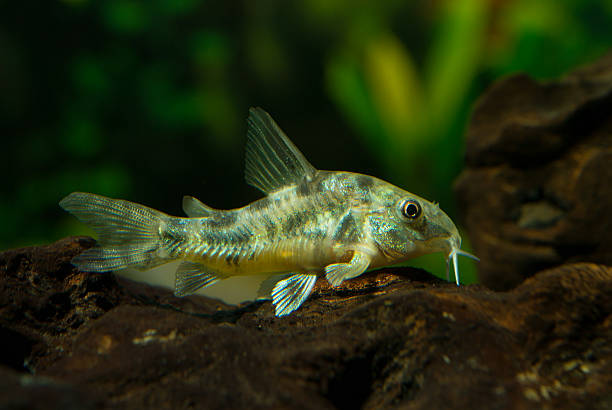
Peppered Corydoras have a unique speckled pattern that earned it the “peppered” name. But there’s more to identifying peppered Corydoras than relying on its speckled body. You must also understand its size, adaptive coloration, personality, and survival traits.
| Size | 2.5 – 3 inches (6 – 7.5 cm) long |
|---|---|
| Shape | Round with flat underbelly for resting |
Color Pattern
Every Peppered Corydoras is at least two-toned with a base color with speckles. These colors create the unique Corydoras paleatus patterning that form the peppered look.
Common base colors include mottled gray, olive green, and silver gray with bluish/bronze highlights, while the speckles are typically brown, black, or dark gray. There’s no red even though the name says “peppered”, their more of a black pepper than a spicy red pepper.
Unique Traits
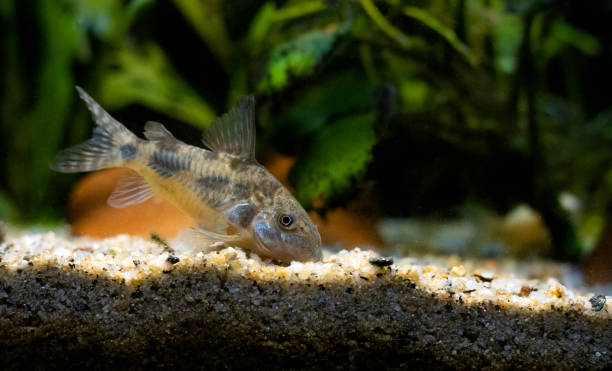
This speckled aquarium catfish has interesting survival skills like adaptive coloration, which forms natural camouflages, and an ability to gulp air from the surface for oxygen intake even though they’re bottom-dwellers.
Now, let’s build the perfect tank for these cute bottom-dwellers in the next section!
Setting Up the Perfect Habitat for Peppered Corydoras
When designing the ideal Corydoras paleatus aquarium habitat, you must reference its natural environment. Everything matters, from the layout to aeration, water quality, and substrate, to give them a comfortable and safe setup.
Tank Layout
There are two parts to your Peppered Corydoras tank setup — Size and Layout.
- Size: Since they’re small pets, a 15-gallon tank would comfortably hold a group of 4 – 6 Peppered Corydoras.
- Layout: Give your pets a planted aquarium with driftwood and other surfaces for algae growth and smooth areas that won’t hurt the barbels around their mouth.
Water Parameters
The best tank conditions for bottom-dwellers like Peppered Corydoras is in soft, cool, pristine water that’s slightly acidic to normal.
| Temperature | 72 – 78℉ |
| pH | 6 – 7.5 |
| Hardness | 2 – 12 dGH General Hardness |1 – 8 dKH Carbonate Hardness |
Without maintaining proper water parameters, the tank’s water quality can degrade, which can cause a wide range of issues from cloudy aquarium water to illness and mass die off.
Decor Essentials
Here’s where you can get creative and recreate the natural Peppered Corydoras freshwater habitat using the layout you designed.
Protect their delicate barbels with smooth substrates like soft sand or fine gravel since cories like to sift through their substrate as they search for food.
Also create shaded areas with leaf litter and live plants as well as caves as these areas will provide your cories with safe places to rest and reduce their stressors.
Feeding the Peppered Corydoras: A Diverse Diet for a Healthy Fish
As bottom-dwellers, you can understand why Peppered Corydoras have a scavenging habit. They’ll forage for their food themselves but still need your help to ensure balanced bottom-dwelling fish nutrition beyond eating leftovers.
Diet Suggestions
A complete Corydoras paleatus diet consists of staples, supplements, and occasional treats. Feed your pets specific sinking pellets for bottom-dwellers, frozen food like bloodworms and daphnia, supplements like blanched veggies and algae wafers, and treats like flakes and granules.
For more on feeding your aquatic pets check out The Ultimate Guide to Fish Food: Pros and Cons & Best Choices!
Feeding Tips
Follow their natural routine by feeding Peppered Corydoras in the evening during their peak activity period. Feed them more staples 1 – 2 times daily, while treats can come once or twice weekly. Ensure they’re sharing the tank space with compatible fish that won’t outcompete them for food.
The Best Tank Mates for Peppered Corydoras
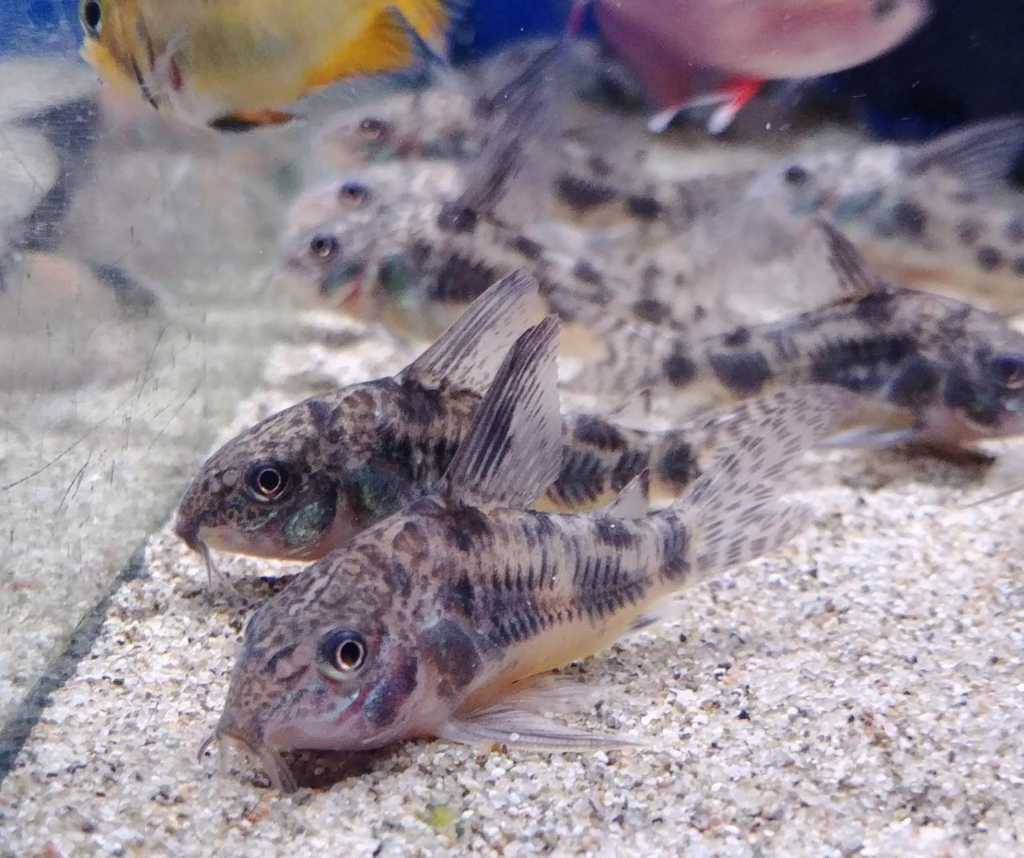
Peppered Corydoras is a social and peaceful freshwater fish species, and you shouldn’t take these traits for granted. They’ll only remain pleasant if they live with compatible tank mates.
You can determine community aquarium compatibility by physical traits, environmental needs and personality. Ideal tank mates would fit each other in all categories so that they won’t get aggressive towards each other. As always monitor your tank closely when introducing new tankmates.
Compatible Species
Compatible peppered Corydoras tank mates that fit the test include Guppies, tetras, Rasboras, small plecos, freshwater shrimp, other corydoras variants, and Dwarf Cichlids.
Avoided Species
On the other end of the spectrum, fin-nippers or aggressive fish like large Cichlids, hyperactive bettas, and large goldfish are incompatible with Peppered Corydoras.
Lifespan and Long-Term Care for Peppered Corydoras
Building a suitable tank, feeding a diverse bottom-dweller diet, pairing your pets with compatible tank mates, and providing an overall focused Peppered Corydoras lifespan care will help them live up to 5 – 10 years.
Lifespan Factors
Your Corydoras paleatus long-term health depends on how well you maintain your pets by giving them stable water quality, a stress-free environment, and quality nutrition. Once you’ve secured the lifespan factors, it’s time to focus on consistency.
Care Tips for Longevity
You must practice these freshwater catfish care tips daily until they become part of your routine. Regularly clean the substrate since your Peppered Corydoras will spend most of their time at the tank’s base. Then, ensure you observe them for behavioral and physical changes that may be signs of ill-health.
Breeding Peppered Corydoras: Encouraging Successful Spawning
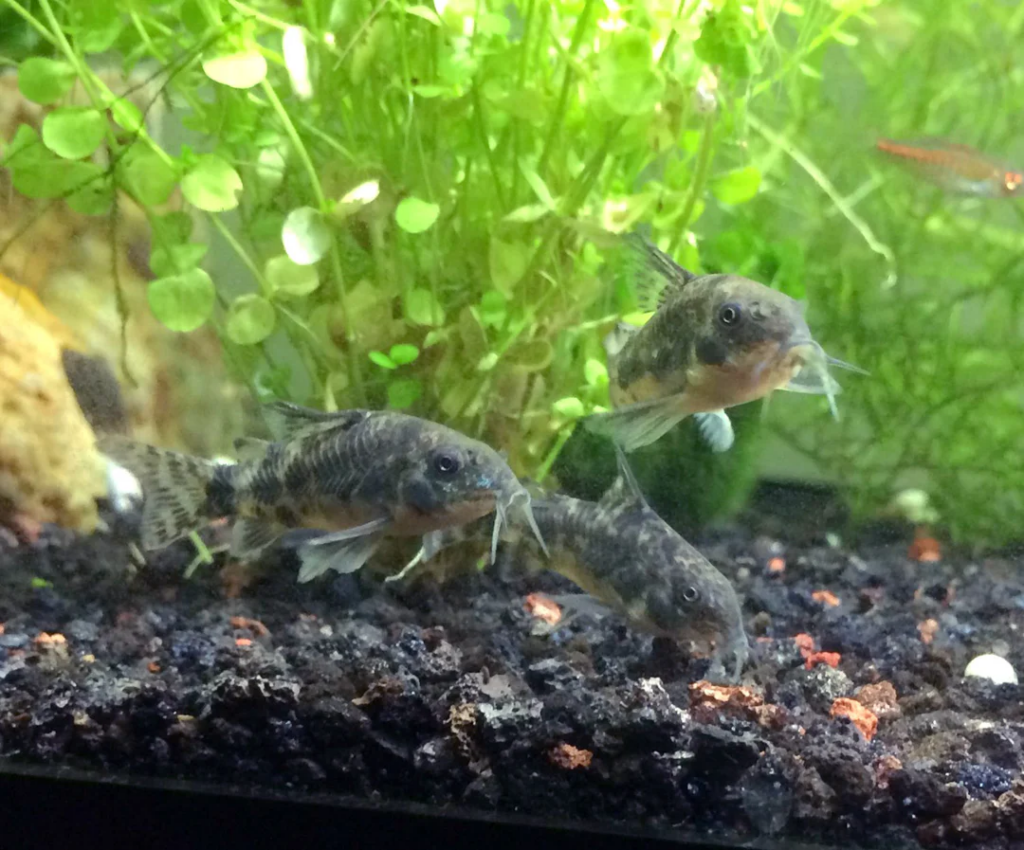
Thankfully, breeding Peppered Corydoras in aquariums is simple compared to many other species. They have manageable breeding habits and preferences like soft, clean water, conditions as explained early and once perfected will have your cories producing eggs in no time! Use this Corydoras paleatus spawning guide, explained in the next sections for results.
Breeding Setup
It’s easy to tell the sex of mature Peppered Corydoras by their size and shape, but when they’re still young they all look the same. At maturity the female corydoras are bigger, both longer and wider than the males.
The shape of the male’s ventral fins are more pointed than that of the female, but without having others to compare it to it is hard to tell. So your best bet, if you plan to breed them is to get 5 or 6 young cories and raise them. This way when they mature you will have some of each sex.
When breeding, get a tank of at least 20 gallons for groups of cories and adjust the temperature to 62 – 68℉, which is slightly cooler water than normal, and change their water a bit more frequently. It’ll trigger spawning behavior because the environment will now feel like the rainy season.
After laying her eggs, the male Peppered Corydoras will fertilize the cluster.
Egg and Fry Care
Separate the eggs from adult fish to ensure survival, or else you risk the parents or other tankmates eating the unhatched eggs. Then, wait 3 – 5 days for them to hatch before you move to fry care.
Raising freshwater catfish fry is mostly about maintaining pristine water conditions and feeding them appropriately. Corydoras fish fry eat infusoria, baby brine shrimp, or finely crushed foods.
Common Health Issues and How to Prevent Them
You can guarantee Peppered Corydoras health care by strengthening your lifespan factors because lack of proper care will lead to common health concerns like barbel erosion, stress-related diseases, and the effects of poor water quality.
Preventative Measures
Preventing aquarium fish diseases: Soft substrate, stable water conditions, and avoiding sharp decorations.
Signs of Illnesses
Observe your pets for symptoms of illnesses such as sluggishness, fin rot, or rapid gill movement.
Once you notice any of these, immediately check your lifespan factors. Ensure the tank conditions are optimal, food is enough, and there’s no stress trigger.
If symptoms persist, then visit a fish vet for specific diagnosis and treatment.
I hope you’ve enjoyed reading this Corydoras Paleatus wellness guide because this is the end.
Conclusion
The Peppered Corydoras care essentials contained in this guide will help you manage your pet’s playful nature, sensitive physical features, peaceful temperament, and dietary needs.
You can handle freshwater catfish tank maintenance by setting the right parameters, periodically cleaning and observing your pets, removing uneaten food after 24 hours, and keeping only a compatible community.
If you’re looking for a hardy, adaptable, and engaging addition to your aquarium, then this species is for you. Follow this Corydoras paleatus aquarium guide to give your pets the best possible care. Let us know what you think in the comment section below!

